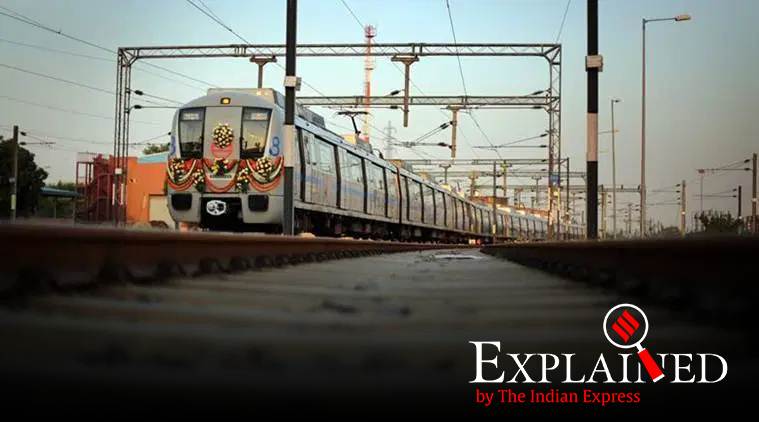Trees and car sheds: How Delhi Metro did it
There was sporadic outrage against the tree felling. The biggest opposition was seen after DMRC decided to build a depot (car shed) in Sultanpur on a belt in Rajokri where several trees would have to be cut.
 The DMRC held extensive meetings with residents of the areas when a train line or station was conceptualised.
The DMRC held extensive meetings with residents of the areas when a train line or station was conceptualised.
Starting 1998, building the first three phases of the Delhi Metro — covering more than 350 km — involved cutting 31,855 trees and transplanting another 6,636 by the Delhi Metro Rail Corporation (DMRC).
There was sporadic outrage against the tree felling. The biggest opposition was seen after DMRC decided to build a depot (car shed) in Sultanpur on a belt in Rajokri where several trees would have to be cut.
The activists forced DMRC to redesign the depot, with an elevated Automatic Train Washing plant — the only one of this kind among the DMRC’s 12 plants. The DMRC’s depots are located at Shastri Park, Khyber Pass, Najafgarh, Yamuna Bank, Mundka, Sarita Vihar, Sultanpur, Dwarka Sector 21, Vinod Nagar, and Kalindi Kunj.
The DMRC says a depot generally requires around 2.5 lakh square metres of space to set up stabling lines (where the trains are parked), inspection bays, workshops, and washing plants. The main functions performed at the depots are parking, maintenance, and inspection.
According to Metro officials who did not want to be named, the experience of then DMRC MD E Sreedharan with the Kolkata Metro proved crucial in the direction that the Delhi Metro took.
Aarey tree-cutting: Technical panel had rejected plot suggested by Waikar
“The Kolkata Metro saw several roadblocks and took a long time to build. Most of it was because of objections from citizens, poor road diversion planning, and lack of dialogue between agencies and people. When Mr Sreedharan came to Delhi, it was decided that the first people to reach out to would be the citizens living in the area,” a senior DMRC official said.
Being a special purpose vehicle, the DMRC functions independent of the central and state governments, and has representatives from several agencies on its board.
“The Delhi Metro enjoys a cult status in Delhi NCR because it has managed to do, with as little disruption as possible, what people of Delhi never imagined would happen. When the first line was visualised, it was decided that diversions would be made in a manner so as to disturb as little traffic as possible. That was among the biggest successes for us. Even today, DMRC is the only agency that ensures that roads are up to the mark, even when construction is underway,” the official said.
The DMRC also held extensive meetings with residents of the areas when a train line or station was conceptualised.
“Our first set of meetings, after a project plan was finalised, was with area residents. The Chief Engineer of the project would meet RWAs and residents, explain the project, how it would decongest the area and the mobility it would bring, and take suggestions. If people suggested alternative locations for valid reasons, we always looked at changing the alignment,” an official said.
In a lot of cases, however, the DMRC also fell back on the powers it had as an umbrella body and went ahead with the plans, despite opposition.
“It is impossible to listen to all quarters. There will be times that some objections will be overlooked. But that was the last step for us. We took feedback from everyone,” the official said.


- 01
- 02
- 03
- 04
- 05




































